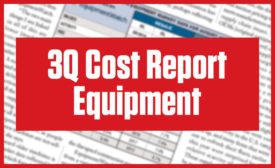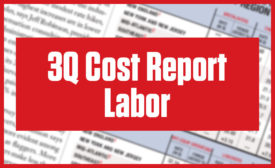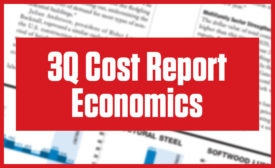Home » cost report
Articles Tagged with ''cost report''
Supply chain issues reduce availability as machines new and old are bought.
Read More
2021 4Q Cost Report: Global Markets Could See Metrics Return to Pre-COVID Norms
Analysis shows that material costs may start to normalize.
Read More
Labor
2021 4Q Cost Report: 'Build Back Better' Bill May Be Both Better and Worse for Firms
Contractor groups see new incentives but also labor violation penalty hikes and added costs
Read More
2021 4Q Cost Report: Markets Still Strong, but Doubts Grow for Execs
Confidence continues to slip as shortages remain acute.
Read More
Economics
2021 4Q Cost Report: Materials, Labor Woes Persist in Fourth Quarter
Experts are hopeful that issues currently plaguing the industry will ease in 2022.
Read More
2021 3Q Cost Report: Aging Iron, Delivery Delays Seen in Heavy Equipment Fleets
EquipmentWatch data shows effects of supply chain constraints on market.
Read More
2021 3Q Cost Report: No End in Sight to Year of Supply Chain Chaos and Materials Challenges
Estimators and other professionals are buying earlier to lock in prices even as site delivery, especially from overseas, becomes a headache
Read More
2021 3Q Cost Report: Construction Executives Stay Confident
Strong headwinds persist, but most continue to see a growing market
Read More
2021 3Q Cost Report: Economic Recovery Slows Amid Delta Variant Concerns
Materials prices have dropped but remain historically high as labor woes continue
Read More
The latest news and information
#1 Source for Construction News, Data, Rankings, Analysis, and Commentary
JOIN ENR UNLIMITEDCopyright ©2024. All Rights Reserved BNP Media.
Design, CMS, Hosting & Web Development :: ePublishing
.jpg?height=168&t=1640294757&width=275)

.jpg?height=168&t=1640194228&width=275)
.jpg?height=168&t=1640294268&width=275)


.jpg?height=168&t=1671747499&width=275)






